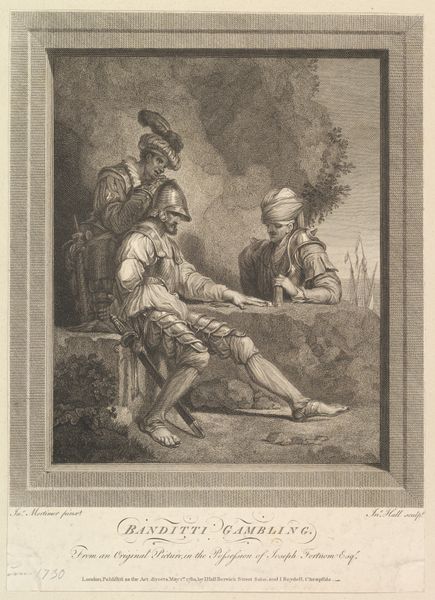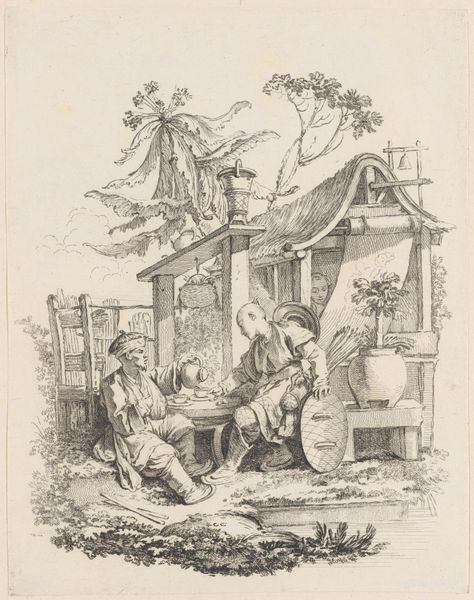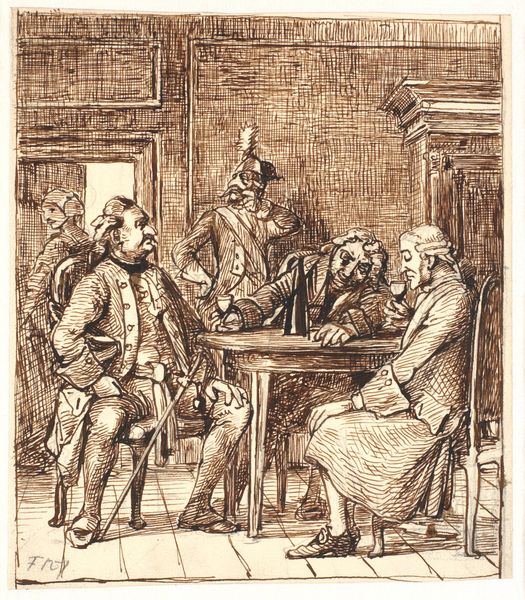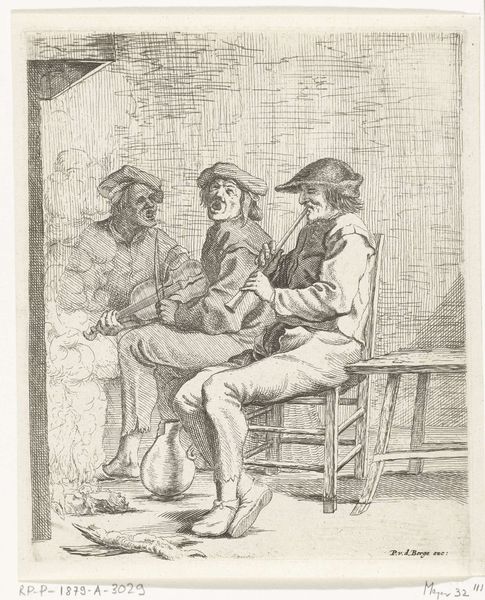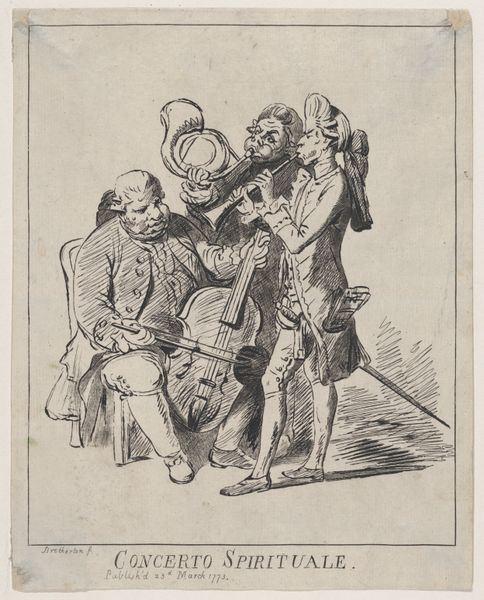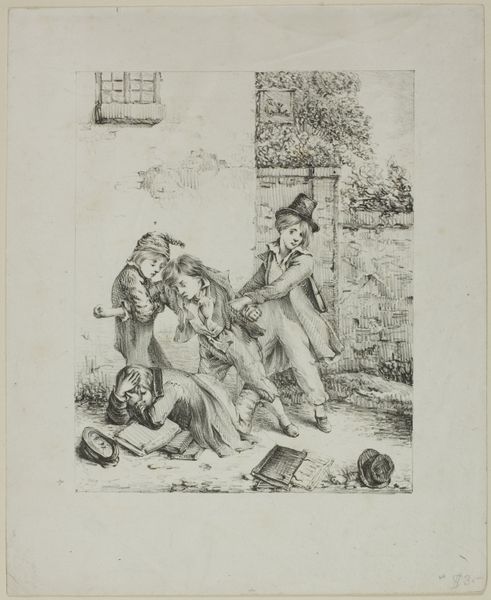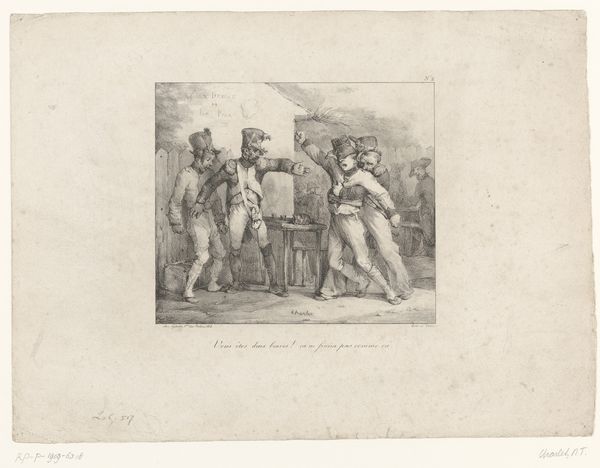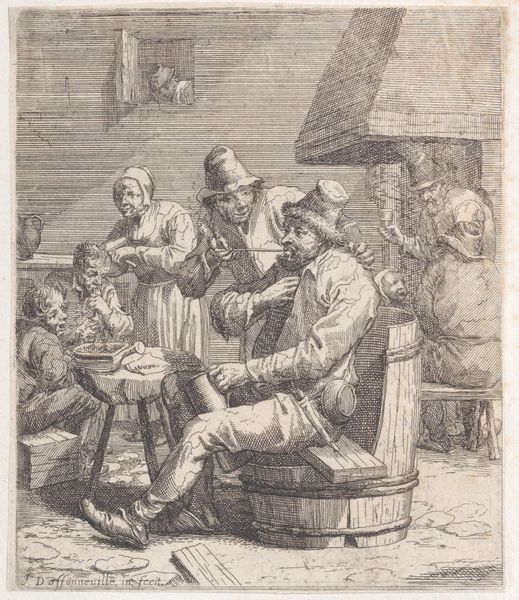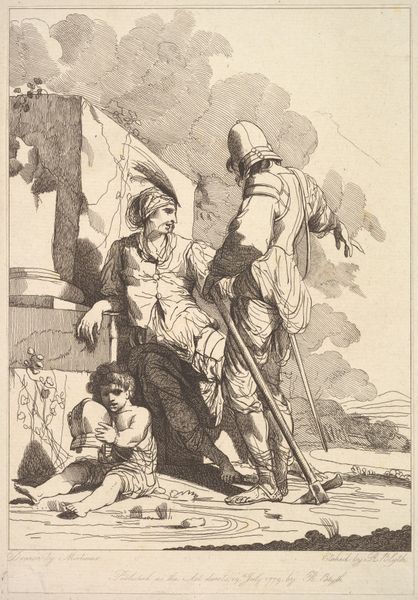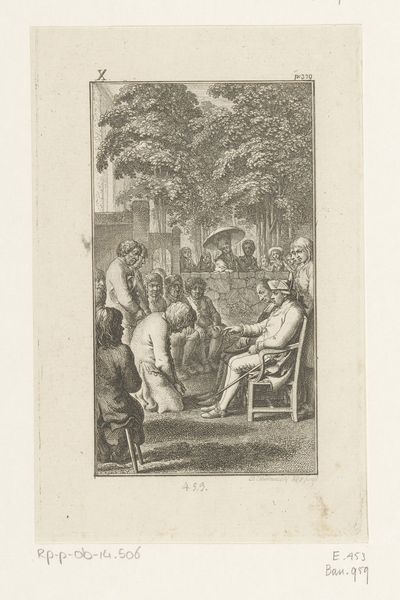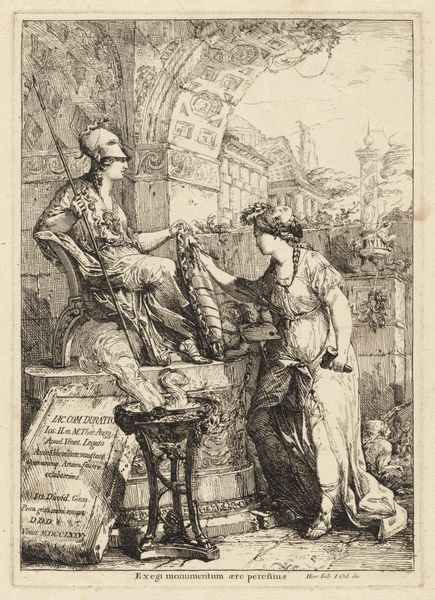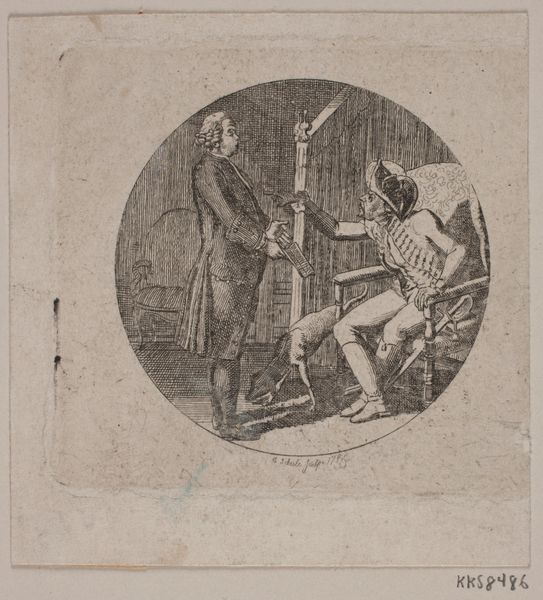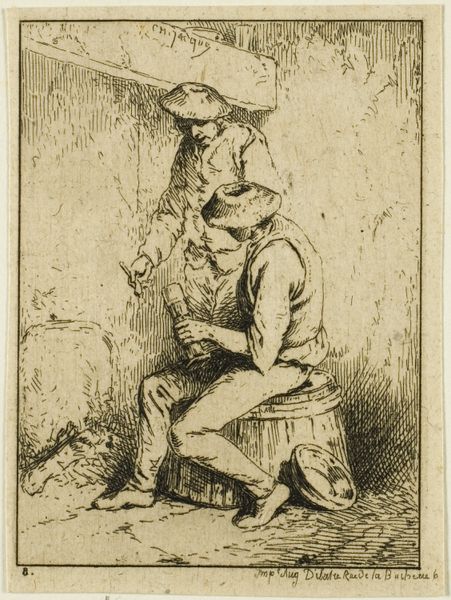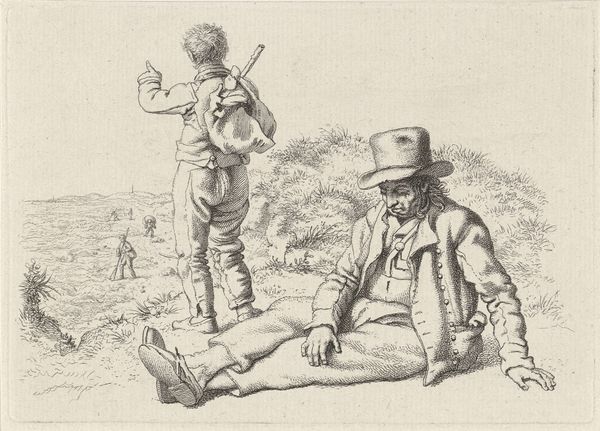
drawing, print, etching
#
drawing
#
narrative-art
# print
#
etching
#
genre-painting
#
history-painting
#
realism
Dimensions: image: 18.5 x 25.3 cm (7 5/16 x 9 15/16 in.) sheet: 26.4 x 34.6 cm (10 3/8 x 13 5/8 in.)
Copyright: National Gallery of Art: CC0 1.0
Curator: Horace Vernet’s etching, “La Reconciliation,” is so…well, reconciliatory! There’s a boisterousness to it. A coming together that just spills out of the scene. It feels tipsy, almost? Editor: Absolutely, there’s a fascinating sense of disorder. Look at the discarded swords, cast aside with reckless abandon, and the graffitied inscription "Bonne Eau-de-Vie." The image invokes a narrative far more profound than simple camaraderie. Vernet hints at themes of political reconciliation. Curator: You think so? It strikes me more as just good old-fashioned making up over a drink! I love how Vernet captures the awkward hug between those two fellas, one nearly choking the other! There’s a vulnerability there, hidden beneath the bluster. Editor: But the context of its creation matters. Remember, Vernet was working in a post-revolutionary France grappling with identity. Genre and history painting are subtly merged. "Reconciliation" suggests national healing, class negotiation perhaps, acted out in a seemingly private scene, but resonant on a much larger sociopolitical scale. Note how dress codes identify potential social strata—is this cross-class fraternization? Curator: I suppose I tend to see the humanity first. I focus on the individual gestures. That clumsy embrace, the overflowing mug... it reminds me of those moments when we set aside differences and connect through simple pleasures. Plus, artistically, the crosshatching gives such lovely texture, really accentuating the intimacy. I like intimacy that might lead to revolution! Editor: Indeed, the detailed linework constructs both an intimate space and allows us to consider the politics of the time with incredible sensitivity. Curator: It’s like a snapshot of human messiness, but rendered with such skill that it elevates it. It makes you wonder about their lives beyond this very scene. Editor: Precisely! The beauty of this work rests in its multi-layered potential interpretations. Vernet offers a moment and also a mirror for a nation examining itself. Curator: Well, however you look at it, it’s an invitation to the party. Editor: And perhaps, an invitation to interrogate whose party it is, and who truly benefits from it.
Comments
No comments
Be the first to comment and join the conversation on the ultimate creative platform.
